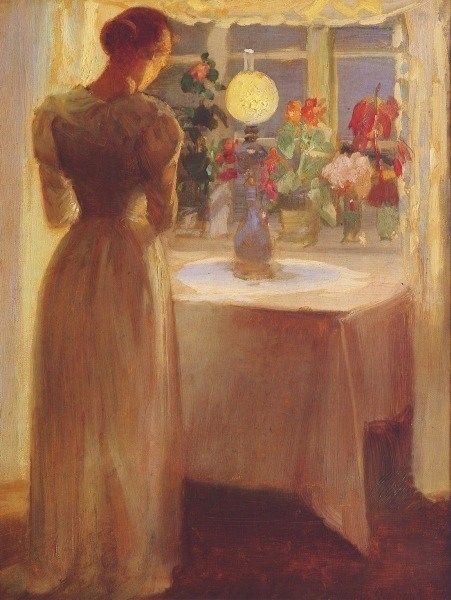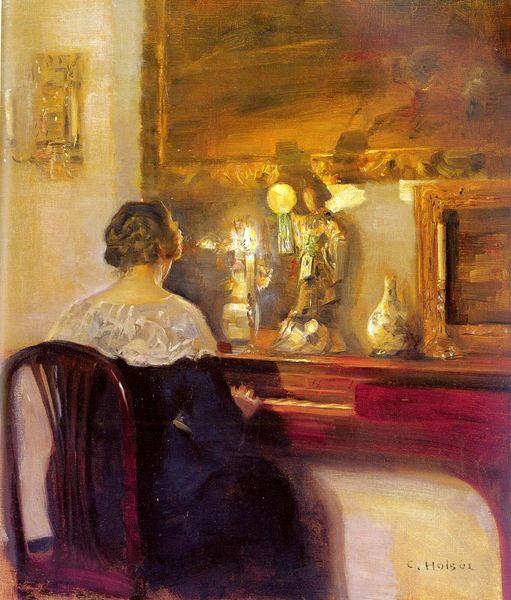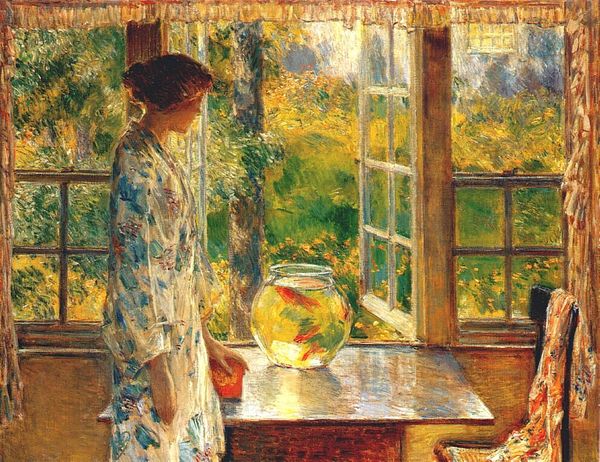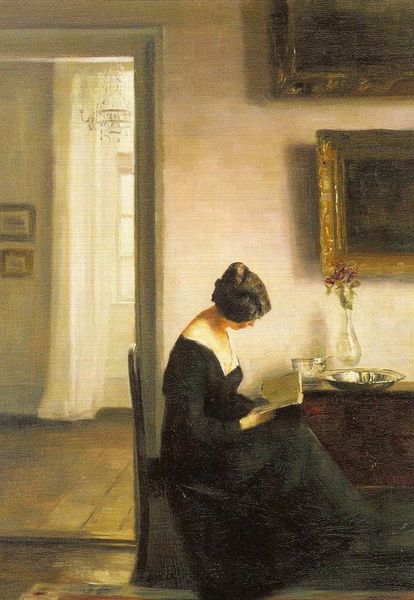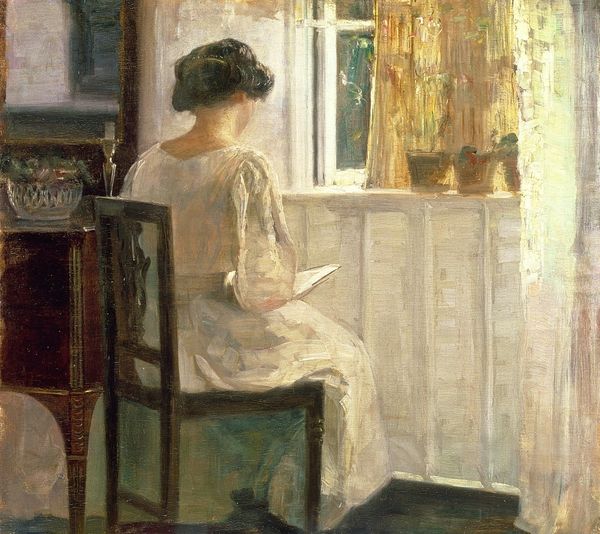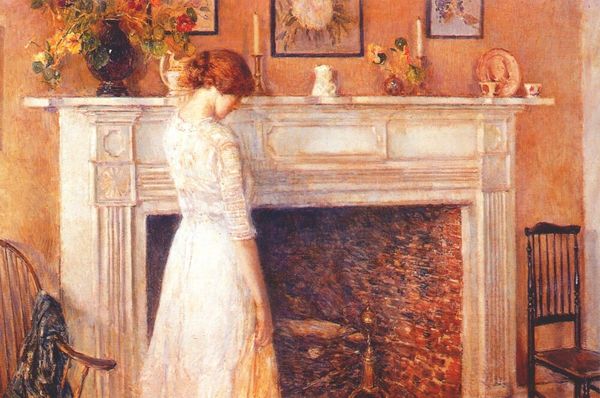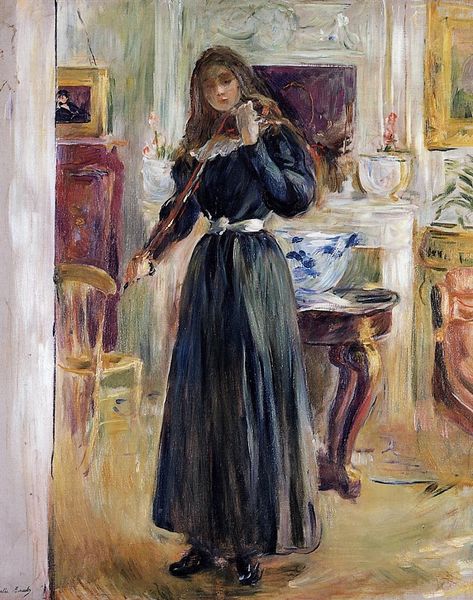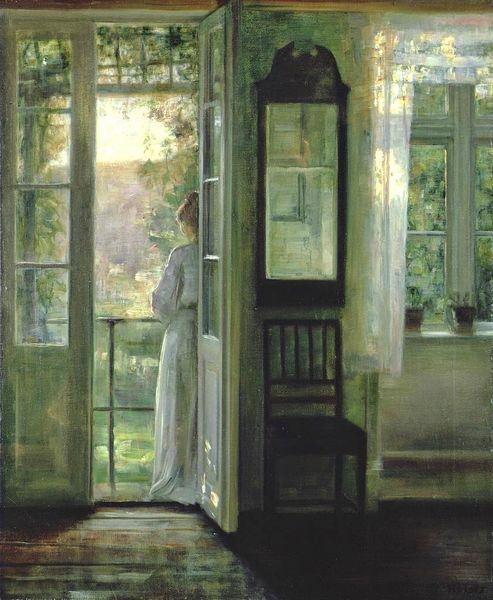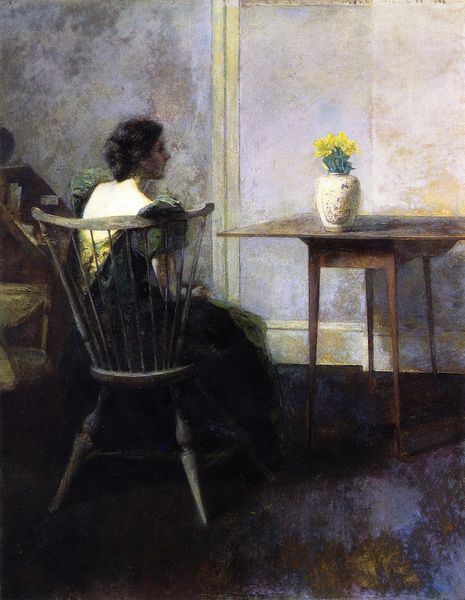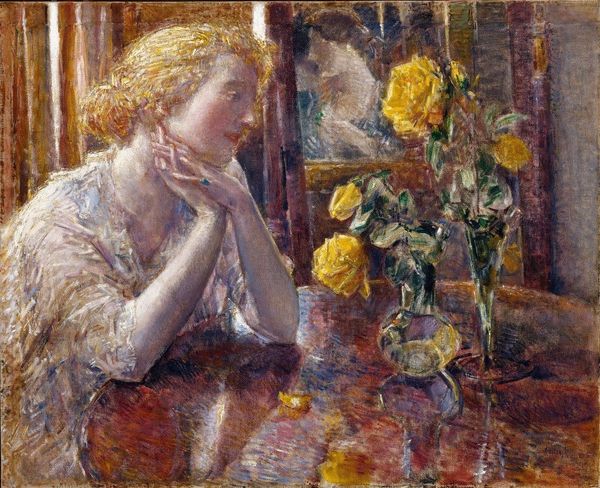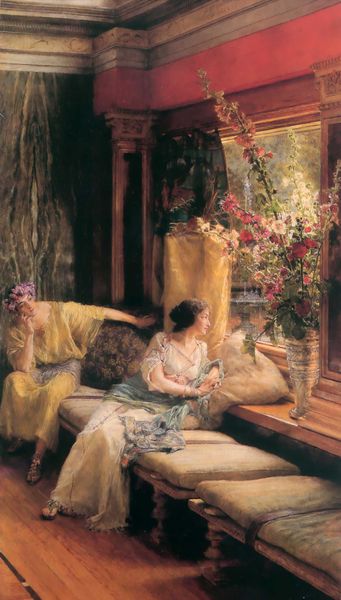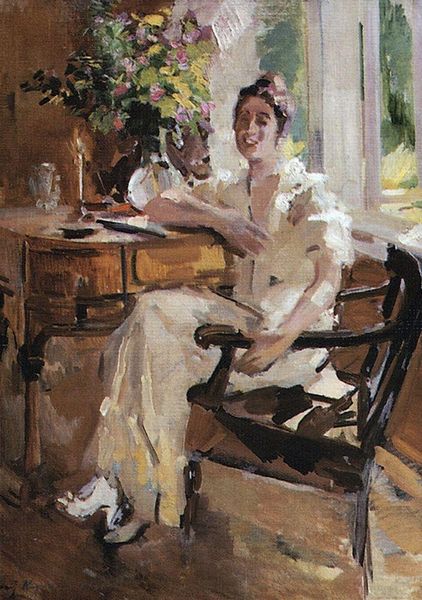
Copyright: Public domain
Curator: Looking at Anna Ancher's "Young Woman in front of a Mirror," painted in 1899, I’m struck by its intimate portrayal. The woman, seen from the back, becomes a quiet subject within this domestic space, rendered with visible, impressionistic brushstrokes of oil. Editor: My first thought is serenity. The light filtering through the window, the muted tones, even the woman’s posture – there's an air of peaceful contemplation that just washes over me. Curator: Ancher's work often provides insight into the private lives of women in the late 19th century. In the context of artistic representation, such subjects often were painted by women, and allowed for exploration of lived experience with greater accuracy. Editor: The mirror is intriguing. What is being reflected? It acts as a powerful symbol of self-reflection, literally, but also suggests ideas of societal expectations placed upon women. It echoes themes seen since the Renaissance, however its particular significance shifts depending on the context, as in, for example, an exhibition celebrating independent female artists. Curator: Yes, and in that specific art historical context, the image serves as a study on individualism. If we observe Ancher’s position amongst Danish artists at the time, her choices often focused on a sense of visual accuracy while using light and colour that set her apart. Editor: Absolutely, and note the use of the yellow flowers throughout. They speak of domestic harmony and the beauty of ordinary life. We find these in genre paintings and, with its links to sunshine, flowers tend to reflect ideas of optimism, warmth, or general comfort. It creates a comforting aura in the image. Curator: And Ancher was a pioneer in modern art. This scene provides insights into a pivotal movement when social roles and visibility were evolving rapidly, revealing much more about this shift if studied further within the context of other such paintings of the time. Editor: Seeing through the symbolism, Ancher’s quiet impression provides an intimate connection between past and present, urging us to look in the mirror. Curator: It's a timeless reminder to find value and artistic appreciation within our individual realities.
Comments
No comments
Be the first to comment and join the conversation on the ultimate creative platform.
